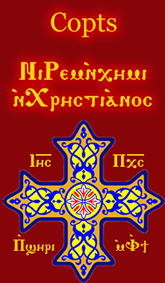| New Testament manuscript | |
| Text | Matthew 24:39-42,44-48 |
|---|---|
| Date | 7th century |
| Script | Greek-Coptic |
| Now at | British Library |
| Size | 25 x 21 cm |
| Type | Alexandrian text-type |
| Category | II |
Uncial 0204 (in the Gregory-Aland numbering), is a Greek-Coptic diglot uncial manuscript of the New Testament, dated paleographically to the 7th century. [1]

Greek is an independent branch of the Indo-European family of languages, native to Greece, Cyprus and other parts of the Eastern Mediterranean and the Black Sea. It has the longest documented history of any living Indo-European language, spanning more than 3000 years of written records. Its writing system has been the Greek alphabet for the major part of its history; other systems, such as Linear B and the Cypriot syllabary, were used previously. The alphabet arose from the Phoenician script and was in turn the basis of the Latin, Cyrillic, Armenian, Coptic, Gothic, and many other writing systems.

Coptic, or Coptic Egyptian, is the latest stage of the Egyptian language, a northern Afro-Asiatic language spoken in Egypt until at least the 17th century as an official language. Egyptian began to be written in the Coptic alphabet, an adaptation of the Greek alphabet with the addition of six or seven signs from Demotic to represent Egyptian sounds the Greek language did not have, in the 1st century AD.

A manuscript was, traditionally, any document that is written by hand -- or, once practical typewriters became available, typewritten -- as opposed to being mechanically printed or reproduced in some indirect or automated way. More recently, the term has come to be understood to further include any written, typed, or word-processed copy of an author's work, as distinguished from its rendition as a printed version of the same. Before the arrival of printing, all documents and books were manuscripts. Manuscripts are not defined by their contents, which may combine writing with mathematical calculations, maps, explanatory figures or illustrations. Manuscripts may be in book form, scrolls or in codex format. Illuminated manuscripts are enriched with pictures, border decorations, elaborately embossed initial letters or full-page illustrations. A document should be at least 75 years old to be considered a manuscript.










